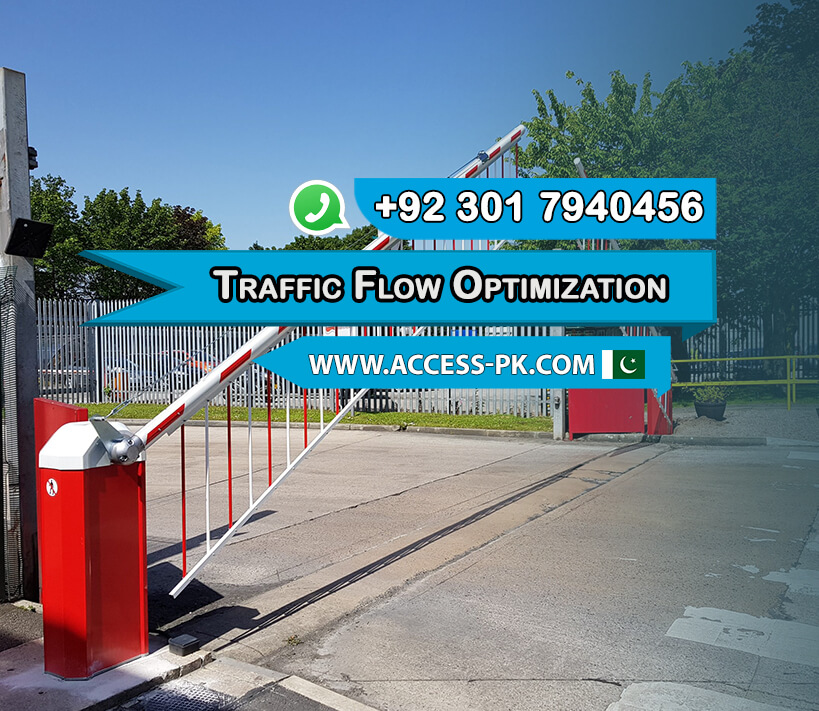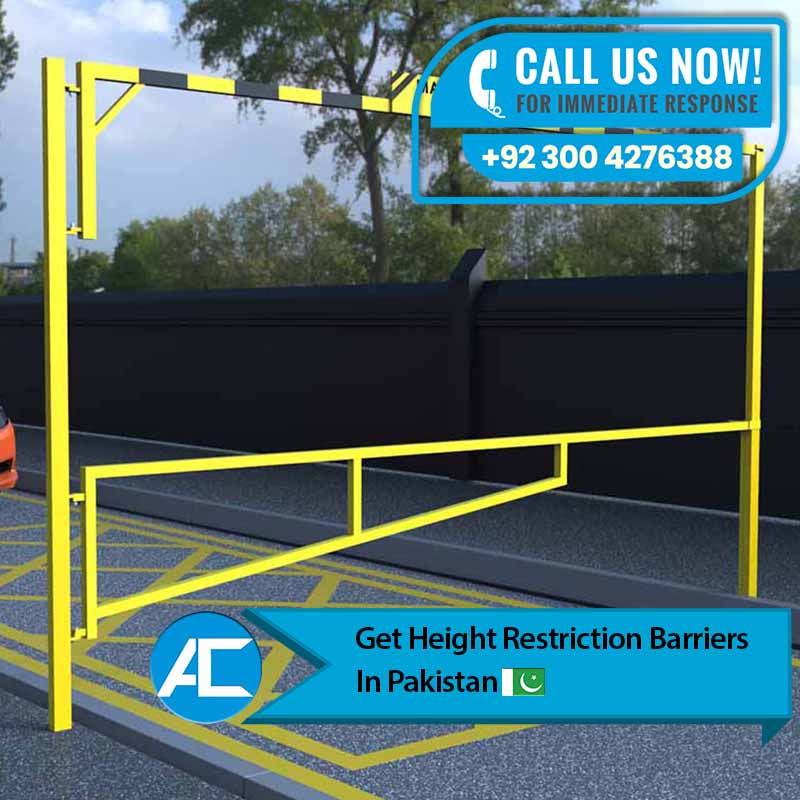Height restriction barriers, a vital facet of access technologies, play an instrumental role in regulating vehicular entry to various spaces. Led by Imran Rafi, Access Technologies stands out as a premier provider in this domain, offering innovative solutions that redefine access control.
These barriers serve a dual purpose: enhancing security and preventing damage. By limiting the height of vehicles allowed access, unauthorized or oversized vehicles are thwarted from entering sensitive areas. This proactive security measure, exemplified by Access Technologies, ensures that only authorized vehicles can enter, bolstering safety protocols.
Furthermore, height restriction barriers excel in preventing accidental damage to structures and assets. Through meticulous engineering, Access Technologies crafts barriers that not only control access but also protect valuable infrastructure from potential collisions. This approach, championed by Imran Rafi’s vision, proves cost-effective by safeguarding against potential financial losses.
Incorporating height restriction barriers into urban planning optimizes traffic flow, a key concern in congested areas. These barriers, expertly designed by Access Technologies, seamlessly guide vehicles of appropriate heights, mitigating congestion risks. Imran Rafi’s commitment to innovation ensures that these barriers harmonize with traffic management systems, making them a cornerstone of efficient urban mobility.
In essence, height restriction barriers offered by Access Technologies, under Imran Rafi’s leadership, redefine access control by merging security, damage prevention, and traffic optimization. As urban landscapes evolve, these barriers continue to be vital instruments for shaping safer, more organized environments.
Height Restrictor – Swing Arm

A height restrictor with a swing arm mechanism is a cutting-edge innovation that revolutionizes access control in various settings. This technology, characterized by its dynamic design and efficient functionality, offers an array of benefits that cater to both security and convenience requirements.
The swing arm height restrictor, a pinnacle of engineering prowess, operates seamlessly in restricting access to authorized vehicles. With a swift and controlled motion, the swing arm extends horizontally to prevent entry of vehicles exceeding a predetermined height. This active mechanism, integrated into cutting-edge solutions, showcases the versatility of modern access control systems.
Incorporating swing arm height restrictors contributes significantly to security enhancement. By effectively barring oversize vehicles from restricted areas, potential security breaches are proactively mitigated. This advanced technology, designed with precision, offers a robust line of defense against unauthorized access, providing organizations with greater peace of mind.
Moreover, the swing arm height restrictor serves as an efficient solution for managing traffic flow in spaces with height limitations. In locations such as parking facilities or industrial zones, where overhead clearance is a concern, these restrictors prove invaluable in streamlining the movement of vehicles. With swift and precise movement, the swing arm mechanism ensures that only vehicles adhering to the height regulations can proceed, minimizing congestion and optimizing traffic efficiency.
In conclusion, the swing arm height restrictor represents a leap forward in access control technology. Its active swing arm mechanism, designed for precision and efficiency, not only enhances security but also contributes to the smooth flow of traffic. As industries and urban landscapes continue to evolve, this innovation stands as a testament to the capabilities of modern engineering in creating safer, more organized, and technologically advanced environments.
Height Restrictor – Rising Arm

The rising arm height restrictor, an innovative marvel in the realm of access control, introduces a new dimension to managing vehicular access in various settings. This technology, characterized by its upward-moving arm mechanism, offers a range of advantages that encompass security, efficiency, and user-friendliness.
At the core of the rising arm height restrictor is its dynamic mechanism, which involves the arm rising vertically to allow authorized vehicles access while deterring those exceeding the height limit. This active operation, integrated into cutting-edge systems, showcases the seamless fusion of modern technology and access control functionality.
Security augmentation is a paramount benefit of the rising arm height restrictor. By physically obstructing unauthorized access, this technology acts as a robust deterrent against potential breaches. The precision-engineered rising arm mechanism ensures that only vehicles conforming to height regulations are granted entry, bolstering the overall security posture of the area.
Furthermore, the rising arm height restrictor excels in optimizing traffic management. In locations such as parking facilities, residential complexes, and commercial zones, where space is at a premium, these restrictors prove invaluable in regulating vehicular flow. With its rapid and controlled motion, the rising arm mechanism facilitates swift and efficient passage for authorized vehicles, contributing to a smoother traffic experience.
In conclusion, the rising arm height restrictor represents a breakthrough in modern access control technology. Its active rising arm mechanism, designed for precision and functionality, not only enhances security but also streamlines traffic management. As urban landscapes evolve and access control demands become more complex, this innovation serves as a testament to the advancements in engineering that contribute to safer, more organized, and technologically adept environments.
Traffic Flow Optimization

Traffic flow optimization stands as a critical aspect of modern urban planning, focusing on enhancing the efficiency and fluidity of vehicular movement within congested areas. By implementing strategic measures and innovative technologies, cities aim to minimize congestion, reduce travel times, and create a more sustainable and organized transportation network.
The integration of smart traffic management systems plays a pivotal role in achieving traffic flow optimization. These systems utilize real-time data, sensors, and advanced algorithms to monitor traffic patterns and adjust signal timings accordingly. As a result, intersections become dynamic and responsive, adapting to changing traffic conditions and minimizing unnecessary delays.
A key principle in traffic flow optimization is the prioritization of public transportation and non-motorized modes of travel. Dedicated bus lanes, bike lanes, and pedestrian-friendly infrastructure contribute to reducing the number of vehicles on the road, alleviating congestion and promoting sustainable commuting options. Additionally, modern urban planning emphasizes mixed-use development, where residential, commercial, and recreational areas are situated within close proximity.
Efforts in traffic flow optimization also involve the integration of intelligent transportation systems (ITS). These systems encompass various technologies, such as real-time traffic information, adaptive traffic signals, and dynamic routing applications. By providing drivers with up-to-date information and alternative routes, ITS empowers them to make informed decisions, avoiding congested areas and distributing traffic more evenly. This active dissemination of information plays a pivotal role in achieving a balanced and efficient traffic flow.
In conclusion, traffic flow optimization is an intricate and multifaceted endeavor that requires a combination of technology, infrastructure development, and strategic planning. By embracing smart traffic management systems, prioritizing sustainable modes of transportation, and integrating intelligent transportation systems, cities can create a harmonious transportation network that reduces congestion, minimizes travel times, and fosters a more livable and vibrant urban environment.
